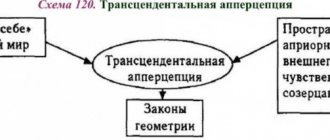Affiliation is a craving, a need, a desire to be in the company of people, an individual’s need to create close, trusting, warm, emotionally charged relationships. This is the desire to get closer to other individuals through friendship, communication, and love. The nature of interaction with parents in childhood and in adolescence with peers underlies the formation of this type of need. The tendency towards the formation of this need is disrupted when various provoking factors arise, such as anxiety, lack of self-confidence. Closeness and communication with other people helps relieve anxious situations.
Definition of what it is
Affiliation in psychology is the need to feel affection, to be friends, to share joy with other people, to be part of a group. This is exactly how this desire was described by G. Murray in 1938. What is important is the attractiveness of such contact between both participants in the interaction.
Foreign and domestic psychologists, such as M. V. Libina, H. Heckhausen, J. Atkinson, and H. Heckhausen studied the desire to establish interpersonal contacts through motivation for it, also studied affiliation as a person’s need for an emotional connection. A. Mehrabian considered affiliation as everyday social mutually beneficial interactions.
M.I. Lisina argued that the motivation for affiliation is secondary, since the desire to communicate is the satisfaction of a cognitive need. D. McClelland believed that affiliation is a constant need for human contact. At the same time, a person must feel part of the system, achieve recognition and receive approval from society.
YES. Leontyev pointed out that affiliation occurs in family and friendly relationships, and depends on the style of communication. The desire is manifested in the need not only to interact with other people, but also to provide help and accept support. The need intensifies when stressful and anxious situations arise. Emotional contact under these conditions softens negative feelings. The absence of such a connection exacerbates the feeling of loneliness and generates frustration.
Gender
Psychologists note that affiliative motivation is also influenced by gender. For example, girls prefer to sincerely and openly share their experiences, guys try to build communications based on business issues and discussions. It should be noted that in addition to gender, age also has an influence. Over the years, the content of communication can change dramatically.
The tendency to affiliate increases when a person is involved in a potentially critical and stressful situation. It is at such moments that people around us provide an opportunity to check whether the choice of behavior in a dangerous situation is correct. As practice shows, the proximity of other people during a stressful situation leads to a decrease in anxiety and excitement, which has a positive effect not only on the psychological, but also on the physiological state. A person's blocking of affiliation provokes feelings of loneliness, alienation and rejection.
Level
Psychologists distinguish 2 levels of affiliation – high and low. They practically do not occur in their pure form, and depend on the type of person’s personality, his emotional state at a certain period of time. Nominally, an average level of affiliation is also distinguished, which is characterized by a combination of features of both types.
High
People with a high level of affiliation are classified as extroverts. These are open, sociable people who are not afraid to talk to strangers, cannot stand loneliness, and love to be in society. It is important for them to be part of a company, to have a large circle of friends, and to participate in events.
Such individuals develop more easily as individuals only in society and achieve success when surrounded by people. In communication, they are not limited to routine phrases, but like to discuss in detail all issues of interest. When forced to be alone, people with a high level of affiliation feel uncomfortable.
Low
Low-level affiliation is characterized by a desire to maintain connections with a small circle of close friends rather than establish new contacts and develop relationships. In psychology, introverts are considered to have a low level. These are independent people who easily manage without communication. Such individuals experience discomfort and fatigue after long conversations, value personal space, and do not get tired of being alone.
General information
If we open the psychological dictionary, we will see that affiliation refers to an emotional connection with other people, as well as the desire to establish it, to have mutual trusting relationships. Thus, the concepts of “affiliation”, “need for affiliation” and “motive for affiliation” are often confused and replaced with one another. One way or another, affiliation (less commonly, affiliation) implies the relationship of a person with society, because the word itself is derived from the English affiliation, which means “connection”, “connection”.
Since our school days we remember that man is a biosocial being.
Let us pay attention to the second root of this complex word: the need to exist in society, in the circle of other people, is inherent in each of us from birth
We are not designed to live alone. And if we do have to, then it makes us suffer—scientifically speaking, it causes frustration—a mental state in a situation of discrepancy between desires and possibilities, which is expressed in depression, anxiety, and despair. Let's remember Robinson and his passionate desire to find at least some kindred soul on a desert island!
We can talk about affiliation in relation not only to one person, but also to a group. Everything is similar: group affiliation implies that a small group seeks to become part of a larger one and, therefore, act according to its laws and rules
In the same way, a person strives to feel like he belongs to some social community, to understand what is an element of a large and important whole (most often, the role of such communities is a family or ethnic group (people)
We recommend: The concept of addiction in psychology
As a rule, affiliation increases when we experience stress and/or find ourselves in an extreme situation. This is due to two reasons. Firstly, finding himself in an unfamiliar, or even potentially dangerous, environment, a person looks for some kind of reference point, a role model, tries to understand how he should behave, and uses the example of those around him to check whether his reactions are adequate. And secondly, being close to others has been proven to calm you down, reduce anxiety and reduce the effects of stress.
Moreover, a certain interdependence between affiliation and health has been revealed. American researchers conducted surveys for several years, the results of which showed: people who communicate closely with relatives or are members of certain communities live longer and have fewer health problems. It turns out that affiliation not only helps to gain peace of mind, but also plays a more important role: it contributes to the preservation of the very existence of an individual or group.
But not everything is so rosy. A situation is quite possible (and probably familiar to everyone) when, on the contrary, society, including the closest people (family or friends), becomes a cause of stress and irritation. The fact is that the number of contacts everyone needs is strictly individual and depends on two general factors: the desire to be accepted and the fear of being rejected.
Motivation
Affiliation in psychology is a fundamental human desire, since consciousness develops only in contact with one’s own kind. The need for attachment is manifested in all people; the motives for a person to enter into relationships with other individuals are different.
D. McClelland and J. Atkinson considered affiliation as one of 4 motivational systems. The psychologist argued that the desire for affiliation, power and achievement reflect social motives of communication, and the desire for avoidance is a manifestation of self-care and the need for security. The last motive can negatively influence the others, distorting them. For example, affiliation, in this case, will be expressed in fear of rejection.
J. Asendorpf pointed out that a person’s motivation to enter into contact with other people is influenced not only by the expectation of a positive response from a communication partner, but by the already learned experience of success in building relationships.
A. Mehrabian, in his study of affiliation, relied on a person’s motivation when interacting with other people. This theory formed the basis of the methodology for studying the level of affiliation, which A. Mehrabian developed in collaboration with S. Kzenski. In the questionnaire, the desire for communication is also considered either out of a desire for acceptance or out of fear of rejection.
The first motive expresses the expectation of mutual understanding, and the second - the fear of failure of communication. People who have a predominant fear of rejection are characterized by self-doubt and anxiety. The desire for affiliation arises in emotionally stable, socially active individuals.
4 Types of Motivation Tendencies
Based on the methodology of A. Mehrabian, psychologist Byrne and co-authors identified 4 types of motivational tendencies depending on a person’s desire for contact and fear of rejection:
- A high level of need for affiliation and a low level of fear of rejection means a person satisfies the desire to make contacts. Sometimes this is expressed in excessive sociability.
- Low desire for contact and strong fear of rejection - the need is not satisfied or is not recognized.
- Low need for affiliation and fear of rejection - a person prefers to remain alone.
- A strong desire to establish relationships and a high level of fear of being rejected - communication ends either in achieving the goal or in failure. This type is characterized by internal conflict, where a person wants communication, but deliberately avoids it.
HUGS AND SONGS FOR RECOGNITION
One of the most common types of affiliative behavior in monkeys is picking up fur with their hands while sitting next to each other, touching and half-hugging each other - we often call this process “biting fleas.” And scientists call this behavior grooming. Grooming is a powerful tool for bringing together individuals who know each other well. Monkeys resort to skin-to-skin contact when they are excited. Friendly touching, scratching and hugging is a direct way to calm the “comrade” (and at the same time yourself) and thus avoid increasing aggression. Therefore, subordinates groom dominants more, and males groom females more in order to achieve success with them. Do you still think that mother monkeys groom their babies solely to keep their fur clean?
Affiliative behavior in primates includes both day and night resting together and sharing food. Small titi monkeys - partners often sit side by side, intertwining their tails. In an effort to unite, these monkeys sing a duet. To sing synchronously with a partner, you need to coordinate your actions with him in both time and space. In captivity, titi pairs have been observed to sing a duet whenever they are reunited after being separated for procedures. In nature, singing duets between partners is observed much more often than sexual behavior. Many people have heard duets of partners - howler monkeys and gibbons.
Causes
Affiliation in psychology is not ordinary emotional contact, but rather the recognition of an individual as a part of the whole - society, a certain social group. The purpose of a person entering into communication may be the desire to make an impression, to establish power over other people, to receive help and support.
Researcher Hill identifies 4 reasons for establishing contact with other people:
- receiving praise and attention;
- overcoming self-doubt through comparison;
- obtaining positive emotions through communication;
- receiving emotional support.
In 1980, a study was conducted on when people would like to be with other people and when they would like to be alone. Thus, the desire to be in society prevailed in situations that bring pleasure, for example, when playing sports, social events, and also in case of threat or danger.
The desire to be alone turned out to be higher in unpleasant circumstances (if a person is angry or upset) and in situations where it is necessary to show concentration (make an important decision, deal with a complex problem).
| Desire for affiliation | Causes |
| Social comparison | Comparison of oneself and other people is the basis for a person to gain knowledge about himself. Only by contacting another person and exploring similarities and differences can an individual evaluate himself, the appropriateness of his behavior, and the adequacy of his judgments. |
| Reducing Anxiety | In threatening and unpleasant situations, people seek contact in order to receive sympathy, support, and consolation. |
| Search for information | Children, when encountering something unfamiliar, turn to adults in search of an answer about how to interact with a new stimulus. Researchers Klinnert and Shaver developed a theory based on child behavior that adults also look for someone who can help them and provide them with information in a difficult situation. |
Ethnic affiliation
Ethnic affiliation (group affiliation) lies in the need of representatives of an ethnic group to be in a society of representatives of complementary ethnic groups and an orientation towards their support. For example, the residents of Belarus strive for an alliance with the residents of Russia. Group affiliation is a relationship between some groups that think that one of them is an integral part of another. In other words, it is the interaction of groups of various sizes and volumes, when a smaller group is absorbed by a larger one and begins to function according to its rules and laws.
In accordance with the current theory of affiliation, any individual has a more or less pronounced need to belong to a certain group. For a significant mass of people in the unstable situation of a transitional society, ethnic and family affiliation (perceiving oneself as a member of society or “family”) becomes a more acceptable method of once again feeling like some part of the whole, finding psychological help and support in traditions. This leads to increased interest in ethnic identification, the need to consolidate the ethnic community, attempts to form an integrating national idea and ideal in new social conditions, isolation and preservation of national mythology, history, culture, etc. from the influence of other ethnic groups.
Self-identification by an individual occurs not only according to ethnic signs and characteristics, therefore ethnicity itself may be on the periphery of a person’s motivations. The importance of ethnicity is influenced not only by impartial social reality (conflicts, migrations, etc.), but also by some subjective factors, for example, the level of education of an individual.
The meaning of ethnic identification depends on the situation. Basically, the ethnic consciousness of the individual and groups is not actualized in conditions of existence in a monoethnic environment or constant ethnic relations. A factor that can increase the possibility of ethnic conflicts and increase the importance of ethnic identification is migration. It is a logical fact that the sense of ethnicity is mainly developed among non-dominant communities.
Equally important is the feeling of ethnic unity, which arises spontaneously and is formed purposefully. The belief in the existence of natural connections between members of the same ethnic society is much more important than the actual presence of such connections.
So, ethnic identity is the most important component of an individual’s social identity, the comprehension of one’s belonging to a specific ethnic society. In the structure of ethnic identity, two main components are usually distinguished: affective - assessment of the qualities of one’s group, the significance of membership in the group and the immediate attitude towards membership; cognitive – ideas and knowledge about the characteristics of one’s group, understanding oneself as a member of such a group.
Ethnicity begins to form at the age of 6-7 years. At this age, children acquire some fragmented knowledge about ethnicity. At 8-9 years old, a child already clearly identifies himself with an ethnic group, based on the place of residence, language and nationality of his parents. At the age of 10-11, ethnic identity is fully formed.
Soldatova and Ryzhova developed a methodology designed to study ethnic tendencies towards affiliation. For the empirical basis of studying the severity of the ethnic affiliation motive, they used three criteria that were previously identified by Triandis as the basis of an allocentric personality type. The first criterion is the subordination of one's own goals to group goals. The second is a pronounced identification with the ethnic group to which the individual belongs. The third is the perception of oneself as part of a group, and not the group itself, as an extension of oneself. According to the listed criteria, they selected nine pairs of evaluative opinions in accordance with the principle of contrasting group orientation and individual orientation.
Need
The need for attachment is formed in a child from birth. Staying in an atmosphere of love, sympathy, and acceptance forms a healthy, full-fledged personality. Psychologists say that a person deprived of affection grows up without a sense of attachment to society. Thus, the affiliative need arises in the family and is based on the style of relationships in the family.
The development of the need for communication goes through several stages:
- the emergence of interest in the parent;
- display of emotions towards the parent;
- actions to attract the parent's attention;
- response emotions to the attitude and reaction of the parent.
With age, the focus of affiliative needs shifts from parents and close adults to peers. The need for attachment reaches its peak in adolescence and young adulthood, which is explained by the growth of self-awareness.
The need for affiliation is characteristic of the entire class of people, regardless of their age, gender, race. However, the desire to establish connections is influenced by cultural characteristics, socialization conditions and upbringing.
According to research, Westerners are more susceptible to feelings of loneliness and depression. In traditional cultures, large families are more common, where people are in a supportive atmosphere, so they are less likely to experience such conditions.
Affiliation in Psychology
The need for communication is called healthy if it is aimed at mutually beneficial relationships, their maintenance and development. There is also a painful desire for affiliation. He is characterized by a desire to support his own needs. If the need for affiliation remains unsatisfied, the person feels lonely, unhappy and frustrated.
People with healthy aspirations can more easily tolerate a lack of communication, as they rely on the quality of emotional contact. Unhealthy affiliation hinders the development of relationships and does not show flexibility, as it is one-sided.
According to gender studies of affiliation, men and women have different motives for contact. The first is understanding and ease of communication. But as men age, their desire to interact with people decreases. Representatives of the fair sex rely more on the emotional component - openness, vulnerability, warmth.
IN SEARCH OF UNITY
How does the desire to be together manifest itself in other animals that are not like primates? Elephants in a “friendly relationship” often touch each other. As a greeting and expression of peaceful intentions, they may intertwine their trunks while standing face to face. The desire for warm relationships among elephants is also expressed in the greeting, in which one elephant puts its trunk into the mouth of another elephant. Affiliative behaviors in elephants sometimes appear in the form of games, such as pretend fights or chases.
Dolphins have their own “equivalent” of primate grooming - this is the so-called petting, or friction, when dolphins touch, stroke another with the help of their pectoral fins. Other forms of dolphin affiliative behavior are often observed in dolphinariums. They are the ones that trainers use to perform tricks. One of the most spectacular and common types of such behavior among dolphins is jumping out of the water together. Scientists believe that the degree of synchrony of swimming, jumping and flips under water performed by males “in an alliance” indicates their cohesion more accurately than all other indicators. Synchronized jumping to the surface is a common component of the amazingly varied displays performed by males around a female. In this case, the synchrony of males’ actions in a potentially competitive situation may reduce tension between them.
Mechanism
Affiliation in psychology is not a one-way process. The quality and nature of communication here depends on both participants in the interaction.
The process of establishing an affiliative connection consists of several stages. Firstly, a person needs to express himself and express his desire to interact with another individual. In this way, he shows the attractiveness of a possible communication partner, recognizes him as his equal and invites him to enter into an equal relationship. Thus, affiliation does not represent personal satisfaction of a need, but also assistance to a partner in this matter.
Often in communication there is a mismatch of roles when one of the participants in the process turns a partner into a means for fulfilling his desires (for example, in receiving help, superiority, humiliation). In this case, the affiliation suffers damage or is destroyed completely.
To establish affiliation, it is necessary to achieve consonance in experiences on both sides, which will be an incentive to maintain communication. This way, emotional contact will feel like a supportive connection that brings satisfaction and a sense of self-worth. The purpose of affiliation is not seen as seeking the love of another person. This is a desire for mutual friendly support, sympathy, acceptance.
To establish and maintain relationships, a person uses methods of verbal and nonverbal communication. Non-verbal ones include a smile, a friendly facial expression, eye contact, gestures and body position. Verbal includes the number and emotional coloring of speech statements.
The initial motive for affiliation is considered to be its expected value. Based on experience, each individual builds a process of establishing communication out of hope for contact or out of fear of being rejected. This experience characterizes communication. So during contact a person can feel easy and at ease, friendly or timid, awkward or insecure.
Based on this, each new relationship building experience has a positive or negative expected value index. The more confident a person is of success, the easier the contact occurs. Conversely, the more an individual fears failure, the more unattractive he finds interacting with people.
Thus, expectation influences the course of the interaction process, and its course influences the result. The repetition of successful or unsuccessful outcomes of communication forms a general picture of the desire for communication, which establishes the further positive or negative attractiveness of the contact. So the higher the expectation of success, the easier the process seems and the weaker its significance. Therefore, the higher the fear of rejection, the more difficult the task and the more valuable the success.
It should be noted that these categories are applicable in the case of initial contact with a stranger. In particular cases, affiliation is influenced by expectations associated with communication with a specific individual with whom the subject is familiar or has information from him.
Knowledge about the interaction partner makes it possible to make a prediction about the ease or difficulty of establishing contact. For example, if a prospective partner has a higher social status, even positive expectations may be compromised by fears of rejection. Fear, tension and constraint may also appear, due to which the establishment of contact will be in danger of failure due to the fault of the subject himself.
The structure of affiliative relationships changes during their development. At the beginning of contact, emotional appeal is more important for interlocutors. During the interaction, the level of trust in each other grows, and it is trust that becomes the basis of the affiliative relationship. Nevertheless, common interests of partners and joint activities are important to maintain relationships.
When affiliative ties with a specific person are destroyed, the need to find a new subject of the relationship increases. If it is impossible to replace the lost connection, depressive tendencies or compensatory behavior (hobbies, communication with animals, nature) appear.
Thus, in psychology, affiliation is the desire to establish an emotional, trusting connection with another person. Such a connection provides support, understanding, and a sense of belonging to society. But to develop and maintain relationships, the mutual contribution of communication partners is necessary.
The central motivational moment of communication
This category includes the choice of a temporary or permanent communications partner. The choice of a permanent partner is carried out not only by business, moral and intellectual qualities, but also by appearance. You can determine the motives for affiliation of a particular individual using various techniques, of which there are a huge number. The most used technique today was developed by Mehrabian. It is based on the diagnosis of two general motivators, which are stable and are part of affiliation motives. These motivators are the tendency to affiliation or love of communication and sensitivity to rejection, fear of rejection. These two categories are the basis for diagnosing affiliation motives according to A. Mehrabian.











